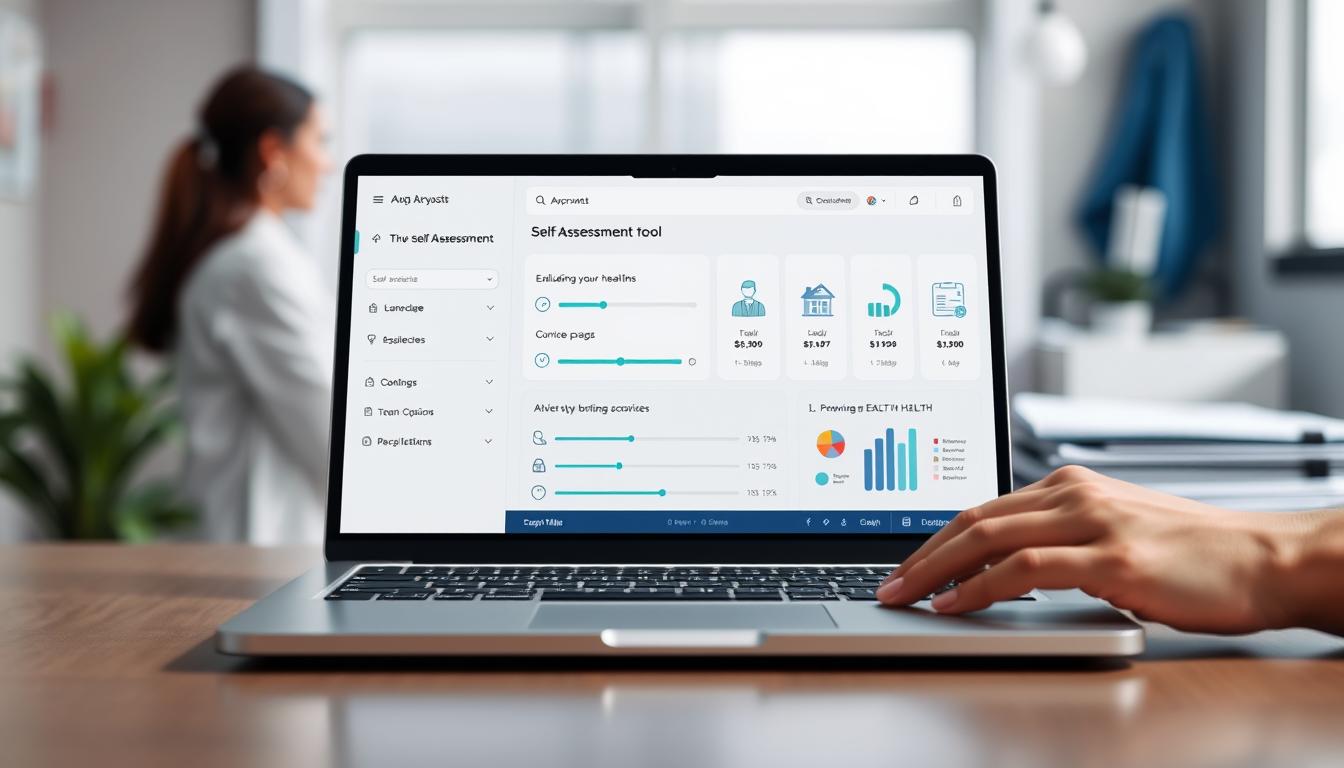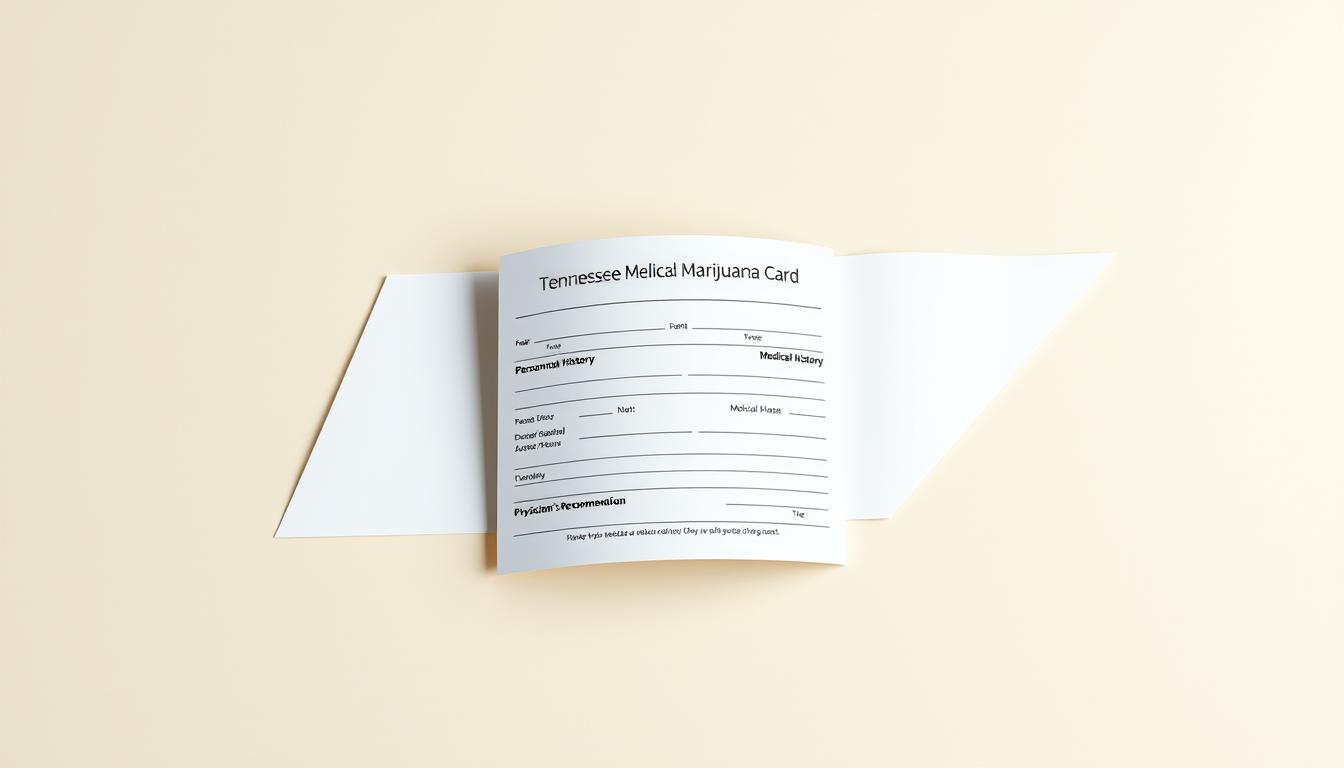patient self-evaluation mn online. Knowing your health is key in today’s fast world. For those in Minnesota, the right tools and resources can greatly help manage health.
Self-assessment tools are now essential. They help people check their health status. Minnesota has many resources, like MnCHOICES and COVID-19 testing, to help residents keep up with their health.
Using these online resources, people can take charge of their health. This guide will show why patient self-evaluation is important. It will also explain how Minnesota residents can use available tools to improve their health.
What is Patient Self-Evaluation?
Patient self-evaluation lets people check their health, spot risks, and choose their care wisely. It’s become more popular with online health tools.
The Minnesota Health Care Programs (MHCP) see how key diagnostic checks are for mental health services. They highlight the role of self-evaluation in healthcare.
Definition and Purpose
Patient self-evaluation means checking your own health. It can be done online, where you answer health questions. The goal is to catch health problems early.
Online health assessment tools make this easy. They’re designed to be simple to use.
Benefits of Self-Evaluation
The perks of self-evaluation are many:
- It helps find health issues early, so you can prevent them.
- It lets you take charge of your health.
- You get to know your health better.
- It helps you make smart choices about your health.
Using online health assessment tools helps you manage your health better. This is key for staying healthy.
In short, patient self-evaluation is key in today’s healthcare. It lets people manage their health proactively. With virtual patient evaluation and online health assessment tools, you can understand your health better. This helps you make better health choices.
Understanding Online Tools for Health Assessment
The digital age has introduced many online health tools. These tools are changing how Minnesotans view their health. They help people understand their health better, so they can make smart choices about their well-being.
Overview of Patient Self-Evaluation Tools
MnCHOICES is a web-based tool for health assessment. It helps Minnesotans who need long-term care. It’s easy to use, making the assessment process simple.
Key Features of Online Health Assessment
Online health tools have important features. They include:
- Comprehensive questionnaires that cover various aspects of health
- Personalized feedback based on the assessment results
- Secure data storage to protect user privacy
Using online health tools, Minnesotans can learn a lot about their health. This knowledge helps them find areas to improve. It also helps them create plans for better health through Minnesota patient self-evaluation processes.
How to Access the Self-Evaluation Tool in MN
Getting to the self-evaluation tool in Minnesota is easy and online. It helps people in Minnesota keep an eye on their health and wellbeing.
First, go to the Minnesota Department of Health website. There, you’ll find lots of health info, including tools for self-evaluation. For example, you can order free COVID-19 tests to use at home. This shows how useful the site is for health matters.
Visiting the Official Health Website
Start by going to the Minnesota Department of Health’s official website. Look for a section on patient self-evaluation tools or health assessments. You’ll find links or tabs to the self-evaluation portal.
On the website, you can check out many health resources. You’ll learn how to do a patient self-exam. The site is easy to use, so finding what you need is simple.
Registration Process
The sign-up process is easy and safe. You’ll need to give some basic info like your name, contact details, and a password. This keeps your health info private.
Once you’re signed up, you can use the self-evaluation tool. You’ll fill out a health questionnaire. This self-monitoring tool helps you check your health and find ways to get better.
By following these steps, Minnesotans can easily use the self-evaluation tool. This way, they can take care of their health and wellbeing.
Step-by-Step Guide to Self-Evaluation
Starting a personal health assessment journey can change your life. This guide will help you through it.
To start, you need to fill out a health questionnaire. It’s designed to get all the details about your health. This includes your medical history, lifestyle, and any symptoms you have.
Completing Your Health Questionnaire
The questionnaire will ask about your physical and mental health. It’s important to answer truthfully and fully. This ensures your assessment is accurate.
- Be detailed about your medical history, including any previous diagnoses or treatments.
- Provide information about your lifestyle, such as your diet, exercise habits, and sleep patterns.
- Describe any symptoms you are experiencing, including their severity and frequency.
Interpreting the Results
After filling out the questionnaire, you’ll get a diagnostic report. This report will show the nature, severity, and impact of any health issues. It will also highlight your strengths and resources.
The report will give you a clear picture of your health. It will point out areas of concern and suggest what to do next.
By following this guide, you can learn a lot about your health. You can then take steps to improve your well-being.
The Importance of Periodic Self-Evaluation
Regular self-evaluation is key to spotting health issues early. It helps people take care of their health by checking it often. For those in Minnesota, online tools make it easy to assess health.
Assessments show health changes, helping people make smart care choices. With patient self-evaluation mn online tools, you can see how your health changes over time. This gives you important insights into your health.
Tracking Your Health Trends
One big plus of self-evaluation is tracking health trends. By watching health metrics, you can spot areas needing attention. This info helps you tweak your health plans and make better care choices.
For example, watching blood pressure or blood sugar levels shows if your health plan works. This data lets you tweak diet, exercise, or meds for better health.
Adjusting Your Health Goals
Self-evaluation also lets you tweak health goals as needed. By checking health often, you can see where changes are needed. This might mean setting new goals or updating old ones to fit your current health.
With online health assessment tools, you can keep up with health goals and adjust them when needed. This ensures you’re always aiming for the best health and well-being.
Common Health Indicators Evaluated
Knowing what health indicators are checked during a self-assessment is key to a healthier life. The self-assessment tool looks at many health aspects. It gives a full view to help you make changes or take action.
Physical Health Metrics
Physical health metrics are a big part of self-assessment. These include:
- Blood Pressure: A key indicator of cardiovascular health.
- Blood Glucose Levels: Important for assessing the risk of diabetes.
- Body Mass Index (BMI): Helps in evaluating weight status and its health risks.
- Lipid Profile: Essential for understanding cholesterol levels and heart health.
These metrics are vital for spotting health issues early. This allows for quick action.
Mental Health Assessments
Mental health assessments are just as important. They help find signs of depression or anxiety. The self-assessment tool may include:
- Questionnaires to check mood and emotional well-being.
- Stress assessment tools to measure stress and its mental health impact.
- Anxiety and depression screening to spot mental health issues.
By checking these indicators, people can understand their mental health. They can then get the right support.
The MnCHOICES assessments cover many health indicators. This ensures a complete health check. By knowing these indicators, people can make better health choices.
Privacy and Security in Online Health Tools
Minnesota residents are using digital health tools more often. It’s important to keep their personal data safe. These tools make checking health easy, but they also raise privacy concerns.
Ensuring Personal Data Safety
Online health tools need strong security to protect personal data. This includes:
- Encryption to keep data safe during and after use
- Secure ways to log in to prevent unauthorized access
- Regular checks to find and fix security weaknesses
With good data safety, people can trust digital health tools. They know their info is secure.
Compliance with Health Regulations
Healthcare providers in Minnesota must follow rules like Minnesota Statutes 245I.10. This ensures data privacy and security. They must:
- Follow state and federal laws on health info privacy
- Have clear policies for handling personal health info
- Train staff on the value of keeping data safe
Following these rules helps healthcare providers keep patient trust. It also keeps health info private.
Resources for Additional Support
Minnesota residents can find extra health support through different channels. After doing an online patient assessment, people can look for more help or resources.
Connecting with Healthcare Providers
For those needing more personal care or have health concerns, finding healthcare providers is key. Minnesota folks can find many healthcare professionals in local directories or by contacting their insurance. It’s important to pick a provider who knows your health needs.
- Primary care physicians for general health
- Specialists for specific health conditions
- Mental health professionals for emotional well-being
For more info on healthcare providers, check the Minnesota Department of Human Services website. It lists resources and support services.
Community Health Programs in Minnesota
Minnesota has many community health programs to support residents’ health. These programs include patient self-exam Minnesota efforts. They focus on preventive care and early health issue detection.
- Health education workshops
- Free or low-cost health screenings
- Support groups for various health conditions
These community programs are great for people wanting to take health steps. By joining, Minnesota folks can understand their health better and learn to keep or improve it.
Using these resources, people can get full care for their physical and mental health. Whether through online checks or community programs, Minnesota residents have lots of help and info.
Encouraging a Culture of Self-Assessment in MN
Minnesota is working hard to promote healthy living. They use COVID-19 testing and health tools to help. This way, people can take care of their health by using personal health checks and tracking tools.
Healthy Lifestyle Initiatives
Minnesota aims to help people manage their health. They use online tools for health tracking. This helps people see their health trends and make better lifestyle choices.
Community Health Awareness
It’s important to raise health awareness in communities. Minnesota’s programs teach people about the value of health checks. They also support those who want to get healthier.
Minnesota is making health a priority by combining personal efforts with community support. This encourages everyone to look after their health through regular checks and smart choices.


